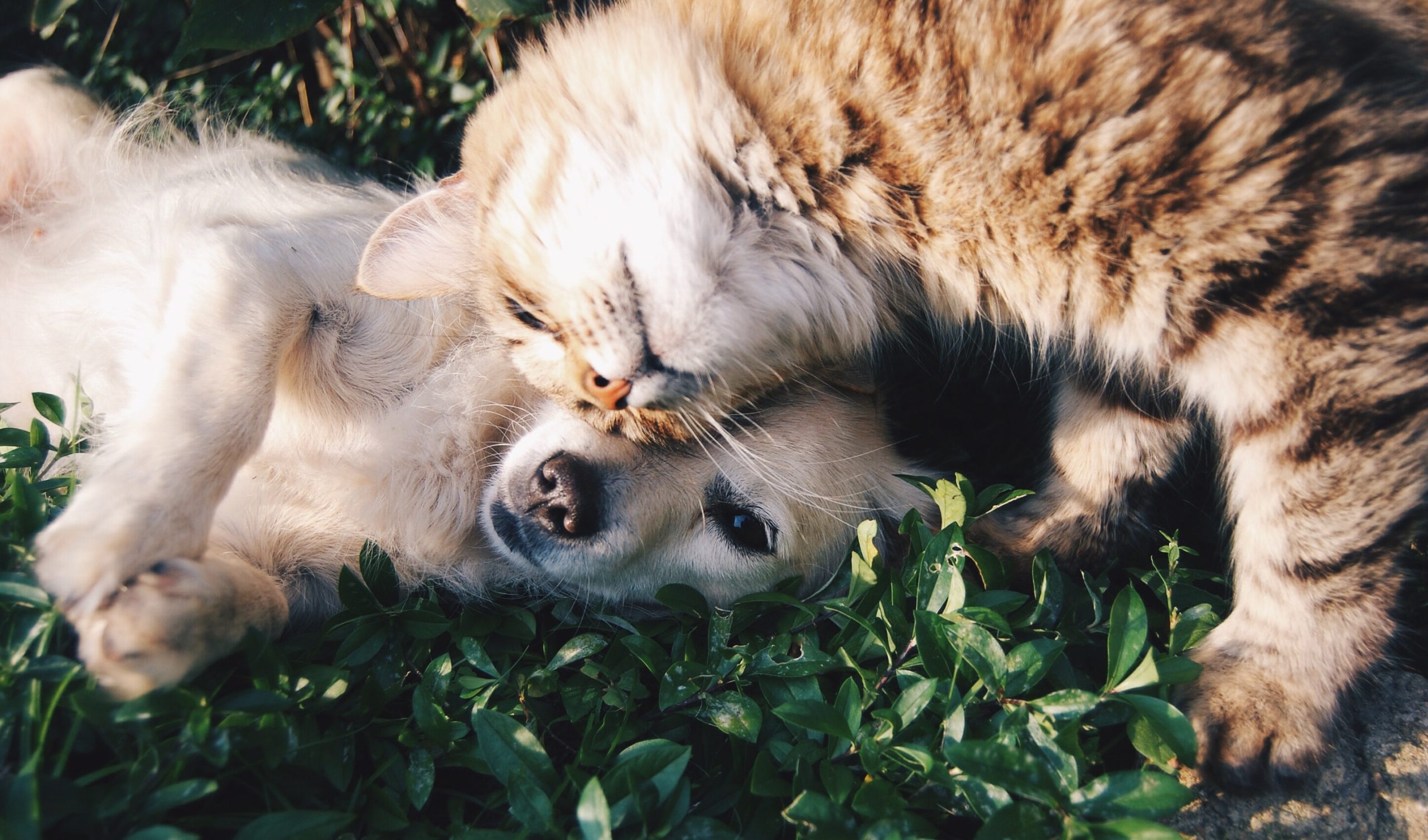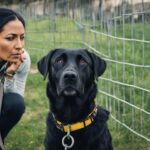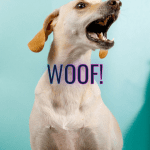We all know that dogs are incredibly intelligent beings, and many of us have a favorite breed. But what about their body language? Have you ever tried to understand what your dog is telling you? Are they happy, sad, scared or angry? You never know until the dog body language reveals itself.
The first thing to understand is how each individual dog communicates with its human family members: the other canines, humans and even other animals in their home territory.
However, when it comes some specific behaviors from your pup's repertoire – like aggression or fear – you need to read between the lines for clues as to why they're acting out this way.
To help us understand, we asked two of the most accomplished dog trainers in America to share their thoughts on how to understand dog body language.
How to read Dog body language
Body language is a term used to describe the nonverbal communication that takes place between people. It includes facial expressions, gestures, posture and eye contact.
Dogs use body language to communicate with their owners and other animals in various ways. The dog communication and body language often reflects their emotions and their intentions. e.g I can tell when my dog is hungry because she presses her nose into the crook of my arm and whimpers while looking up at me with big, sad eyes.
When trying to better understand your dog's body language, you should first study their behavior before attempting any interaction with them.
Dog Body Posture
Dog body posture is just one of many signs that a dog may be trying to communicate with their owner. Using the following list, you can tell what your dog is trying to say:-
- When a dog is unsure or afraid, the weight will be balanced on its hindquarters.
- A forward-weighted dog shows interest and eagerness.
- While a conflicted weight back and forth signifies fear yet also interest in something else like food or playtime with you.
- Curved dog's back is a sign of submission and appeasement, which can be seen in dogs when they are greeting their owners or other humans. The curved dog's back indicates that the animal has dipped its head downwards to make itself smaller so it won't cause harm as it approaches you.
- Curved dog's back may also indicate fearfulness due to the fact that curving your back around an approaching person takes away some of your ability to defend yourself physically while making yourself more vulnerable instead.
- If a dog lifts its paw, it shows sign of appeasement .The position of the rear paws are important because one is generally used for scratching while another will hold something such as food or toy. It's common for dogs to lift their front paws when they're excited about playing with you.
- When a play bow position is taken by your dog, it means that they are trying to initiate contact with you. When in this position they will put their head down and bend their elbows forward while remaining on all fours. The rear side of the body should be up so as not to touch the ground when doing this gesture.
Dog Ears Body Language
Dogs have a wide range of body language cues. One of their most important clues is the position and size of their ears. Their ears can give away what they're thinking or feeling, whether they are alert, interested in something exciting happening nearby, aggressive, fearful or submissive.
- If a dog's ears lay flat, it can indicate fear when they are not able to see their owner or something else. They may also be laying down because of exhaustion or being unable to keep up with the pace of whatever is going on around them.
- When dogs' ears point forward, this can signal interest and excitement about what is happening in front of them.
- If you want to know what your dog is trying to tell you, then it's best that you take a look at his ears. If the ears are up and relaxed, then the dog will be calm and friendly.
- The next time your pet has its eyes on something interesting in front of it or if he starts sniffing around for trouble with an alert ear position; this means that there might be some hostility lurking nearby.
- Dog body language is a key aspect to understanding what your dog is trying to tell you. If they are relaxed, ears will be tilted back and the mouth open slightly with their teeth showing.
- The most fearful dogs will flatten out their ears and tuck in their tails as they try to retreat if approached by an unfamiliar person or animal that may pose a threat.
Dog Eye Body Language
Dog,s eyes have a lot of meaning. They can give away a dog's mood and emotions. Dogs can look happy, sad or scared.
- When they are relaxed, the dog may have their eyes partially closed as though dozing with his tongue hanging out as he pants with what looks like contentment on his face.
- Sometimes dogs have their eyes open to watch what is going on or are alert with their ears up and head turned to the side listening for any unusual sounds.
- If a dog's eyes are staring at you, it usually means they want attention.
- If a dog's eyes look fearful or anxious in any way, this is often because the animal has been threatened and is thinking about fighting back or running away.
- When they feel threatened, a dog's pupils will dilate, they will growl or snarl and they may also try to make themselves look bigger by standing up on their back legs.
- If your dog is looking away from you or making no eye contact it's likely just being friendly.
- If your dog is shy or nervous they will often look down towards the ground and not make direct eye contact with their owner.
- When the dog's eyes are closed while it has its head high in the air, this indicates that he is feeling very happy about something.
Dog Mouth Body Language
Dogs often show their emotions through body language, which is why it's important to know what your dog is trying to communicate. Dog,s mouth shape can give away their mood. The shape of a dog's mouth is very important because it can show that the dog may be about to bite somebody or feeling aggressive in general.
Your dog may be telling you that he or she is happy, but their mouth also can tell a lot about what your dog's thinking. In particular, the way they open their mouths as well as how wide they're smiling tells us lots of things about dogs' moods and emotions.
- When the dog's mouth is in a more of an upside-down U shape, it usually means that they are feeling aggressive or may be about to bite somebody.
- Some dogs smile when they are happy
- Closed mouths are a sign of stress.
- The lips pulled back at the corners of its mouth are an indicator that they're not happy or relaxed.
- The dog will open his mouth and show you that he is not happy.
- If your dog open its mouth to another animal or person it means “stay away from me.”
- However, a dog's lips can also curl up in a snarl and retract to expose his teeth. This may be accompanied by growling sounds that indicate aggression.
- In addition to the dog's body language, there are certain things that you should pay attention to. For example, when your dog is in a different room and he has his mouth open wide with saliva drooling out of it while watching you intently from afar. This could indicate that he wants something or is trying to tell you something specific through body language such as “I'm hungry” or “Open up.”
Dog Tail Body Language
A Dog's tail is a very important part of their body language. In order to understand what your dog is trying to communicate, you need to determine the position and movement of his tail. The position of the tail is different depending on what your dog is doing and where they are in their body language hierarchy.
The following are examples of what your dog might be trying to tell you.
- A dog's tail that is held high and wagging means the dog may be excited to greet you.
- The tail wag is a sign of joy, happiness, and pleasure.
- A low-level tail wag expresses contentment or satisfaction with life in general.
- A mid-level tail shake means that your pet wants closer attention from you as they may want to play or go for a walk with you.
- A dog with a tail tucked under may indicate fear. If you have seen your pup's ears back or eyes closed, this may be an indicator that they're feeling fearful.
- The canine brain has been proven to recognize certain behaviors as threatening before other emotions like sadness or anger have had time to process within them, so it would make sense why dogs tuck their tails when they're feeling afraid.
- Tail position also changes when a person approaches.
What do dogs do when they are happy to see you?
Dogs may lick your face, jump on you, and wag their tails. A happy dog will bring his head close to yours and tilt it from side to side, while a more timid dog might just lower their tail.
How do you read a dog's facial expressions?
A dog's facial expressions can tell you a lot about what the dog is thinking and feeling. When your dog looks up at you, he is likely to be curious or excited. When your dog looks away, he might be feeling shy or apprehensive. When your dog's ears are back, he is likely to be nervous. And when a dog growls, it can mean that the dog is feeling threatened.
How do you make your dog think you love them?
To make your dog feel like you love them, give them lots of attention and affection. Show your dog your love by petting and brushing them, or giving them treats. You should pet your dog to show him you love him!
Making your pup feel loved is easy. All it takes is some time and affection.
Do dogs know we kiss them because we love them?
No, dogs don't know we kiss them because we love them. Dogs have a lot of different behaviors that indicate their reactions to our interactions with them and the way they react is not always the same.
However, dogs don't know that this is what humans do and so they're not really aware of why people are kissing them. They will also likely expect you to continue licking their face as if you were giving a hearty pat on the head or chest after your initial “kiss”.
What are dogs trying to tell you?
Dogs are trying to tell people a lot of things. They might be telling you that they're hungry, that they need attention, or even just how happy they are to see you. Their body language is surprisingly easy to understand. For example, when they wag their tail rapidly back and forth (known as “wagging”), they are usually trying to show happiness or excitement.
How do dogs tell you they want something?
A dog will usually growl or bark when they want something, but there are other signs you can watch for. Dogs may lick their lips and raise their eyebrows to show that they're getting excited. They may also lick their noses, which is a sign of contentment.
How do dogs show their happiness?
Dogs can show happiness in a variety of ways, but the following are some common examples. They may lick their cheeks or tail, they may stand on their hind legs and wag their tail, they may jump up and down, or they may shake their entire bodies.
How do you tell what your dog is trying to tell you?
A dog's body language is a useful tool for figuring out what your pet might be trying to tell you. This includes the stance that your dog takes, its facial expressions, and even how it's carrying its tail.
What does it mean when a dog pushes his body against you?
This means that the dog is trying to make contact with you. Some dogs will push their body against an object they want to bite.
What is the body language of a happy dog?
The body language of a happy dog is almost always upright with its tail up and its mouth open. Its ears may be perked up, and the eyes may be bright. The tone of the dog's voice is likely to be cheerful, and the tail may wag rapidly.
Conclusion
Learning dog body language is easy once you know the basics. Body language is an important part of communication between dogs and humans. You can tell what your dog wants or is thinking by watching his body language.





